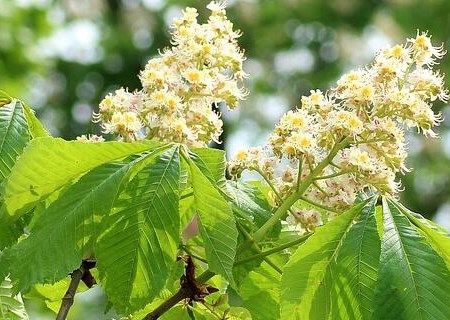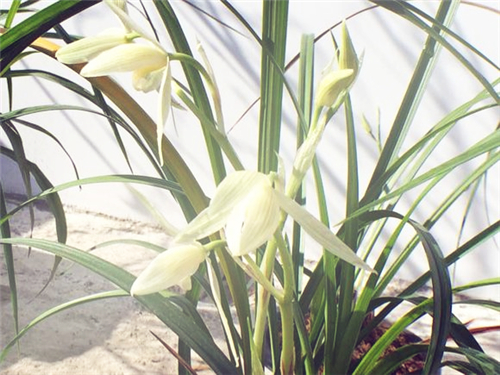What are the seed planting methods of deciduous trees? What are the prospects? The difference between and banyan trees
The seven-leaf tree is a deciduous tree, up to 25 meters high, the seeds of the seven-leaf tree are edible, but the taste is bitter and astringent, it needs to be boiled in alkali water before edible, it tastes like chestnut. Starch can also be extracted. What do you know about the seed planting methods of the seven-leaf tree? What are the prospects? The difference between and banyan trees? Fine wood can make all kinds of utensils, seeds can be used as medicine, and oil can be pressed to make soap. The seven-leaf tree has beautiful shape, beautiful flowers and strange fruit shape. It is a rare tree species for viewing leaves, flowers and fruits, and it is one of the world-famous ornamental tree species.

1. Seed planting methods of Buckeye trees
1. Cutting season
Spring is the appropriate time for cutting. strong branches are selected for cutting. before cutting, the base of cuttings is soaked for 10 minutes or treated with rooting agent to promote rooting and pruning can be carried out in winter to maintain the beauty of the tree.
2. Planting and maintenance
The maintenance method of banyan tree is basically the same as that of general flowers and trees, and there is nothing special. It requires fertile soil, good ventilation and plenty of sunshine. Watering is required to see dry and wet, and water thoroughly at one time. In summer, two or three days are dry and then watered; in winter, it can be watered once a week, and the pot is changed every two years. The soil can be made of raw soil, rotten leaf soil and pine needle soil. Prefer the warm, humid, sunny and well-ventilated environment, and the fertile and loose slightly acidic sandy loam is better. When the winter temperature is lower than 5 ℃, there is no frost damage and is more hardy.
Cuttage propagation is commonly used. It is suitable for cutting from April to June, select the top twig, 20 cm long, leave 2 Mel 3 leaves, cut off the lower leaves, the cut mouth should be flat, the cut mouth often secrete white milk, wash it with warm water, dry it a little and then cut it, and it can take root 30 days after cutting.
Potted seedlings are placed in a semi-shaded place and can be cultivated outdoors when the plant height is 30 cm. Seedlings change pots every spring, replenish fresh and fertile soil, and change large pots. The adult plants change their pots every 2-3 years. Fertilization was applied once every two weeks during the growing period. In midsummer, in addition to normal watering, more spraying is needed, and watering is gradually reduced in autumn and winter. Indoor cultivation in winter requires adequate sunshine and ventilation.
2. analysis on the prospect of planting seven-leaf trees.
1. Garden value
The seven-leaf tree is graceful and magnificent, with sparse branches and leaves, a crown such as a canopy, large and beautiful flowers and strange fruit shape. it is a rare tree species for viewing leaves, flowers and fruits, and it is one of the world-famous ornamental tree species. The huge inflorescence when flowering is like an ornate candlestick, which is quite spectacular, so it has been regarded as one of the four street tree species in the world (Platanus, Linden, elm and seven-leaf tree). The tree should be planted near the mountain and water, and can be used as a street tree in the garden or scenic spot, or alone on the edge of the lawn as a landscape tree. The Buckeye tree has a straight trunk, a thick crown, full of flowers in early summer, and large white inflorescences standing in clusters of leaves, like magnificent candlesticks. It is an excellent road tree and garden ornamental plant, which can be used as greening tree species in sidewalks, parks and squares, alone or planted in front of buildings and between sparse forests, or mixed with evergreen trees and broad-leaved trees. In Europe, the United States, Japan and other places, the seven-leaf tree is often widely planted as a street tree and shade tree. In North America, safflower or pink flowers and double seven-leaf trees are gardened on both sides of the road. When the flowers bloom, the scenery is very beautiful. In China, the seven-leaf tree has a deep relationship with Buddhism, so there are more than a thousand-year-old seven-leaf trees in many ancient temples, such as Lingyin Temple in Hangzhou, Wofo Temple in Beijing and Dajue Temple. Therefore, the seven-leaf tree has a wide range of responses in landscaping.
2. Economic value
The seven-leaf tree can be used as food, medicine, wood, etc., leaf buds can be used instead of tea, bark and roots can make soap, leaves and flowers can be used as dyes, seeds can extract starch, extract oil, can also be eaten, taste similar to Chinese chestnut, and can be used as medicine. It has the functions of calming nerves, regulating qi, killing insects and so on. Germany has the production of seven-leaf tree extract for the treatment of varicose veins, vascular detumescence ointment. At present, many cosmetic lotions and skin care products on the market contain seven-leaf tree ingredients, and the role of its beauty and skin care and shrinking pores has been widely hyped and expensive. The seven-leaf tree is light in material and can be used for papermaking, carving, furniture and handicrafts. Fine wood can make all kinds of utensils, seeds can be used as medicine, and oil can be pressed to make soap.
3. Medicinal value
Aesculin, a natural active ingredient extracted from the seven-leaf tree, promotes microcirculation and maintains normal cell metabolism by inhibiting collagenase and other enzymes closely related to skin texture and integrity, thus promoting pore convergence, cleanliness and nourishment. Make the skin delicate and flawless. The species of the seven-leaf tree contains saponins of aescin, which can promote venous circulation. Aescin can restore the normal state of the vein wall, thus promoting the return of blood to the heart. Local and oral preparations of Saha seed extract are very popular in Europe and are mainly used in the treatment of chronic venous insufficiency and small-scale varicose veins. Aescin also has anti-inflammatory effects and has been shown to reduce edema caused by trauma, especially after sports injuries, surgery and head injuries. The local preparation of aescin is very popular in Europe for the treatment of acute sprain during exercise. The seed of Aesculus chinensis is edible, but it tastes bitter and astringent. It needs to be boiled in alkaline water before it can be eaten. It tastes like Chinese chestnut. Starch can also be extracted. The taste is similar to that of Chinese chestnut, and it can be used as medicine to calm the nerves, regulate qi, kill insects and so on.
The difference between the seven-leaf tree and the banyan tree
There are four kinds of sacred trees in Buddhism: one is the tree where the Buddha was born, the name worry-free tree; the second is the tree where the Buddha became Buddha, the name Bodhi tree; the third is the seven-leaf tree; the fourth is the Saha tree. The seven-leaf tree and the banyan tree are both Buddha trees and living cultural relics, but most people always confuse them, which is very wrong.
1. Different families and genera
Although the seven-leaf tree and the banyan tree are both Buddhist trees and living cultural relics, it is very wrong to confuse them. The former is a deciduous tree of the family Aesculaceae, while the latter is a large tree of the genus banyan.
2. The leaves are different
Buckeye palmately compound leaves, composed of 5-7 small, papery, oblong-lanceolate to oblong-oblanceolate, margin obtusely pointed serrulate. Bodhi leaves triangular-ovate, leathery, apex cuspidate, apically extending caudate, entire or undulate.
Time: 2019-03-18 Click:
- Prev

How to raise Dendrobium
How to raise Dendrobium
- Next

How much is the market price of big snow in Orchidaceae? When will it blossom? How do you raise it? What's the area with Xiao Xue Su?
Da Xue Su, also known as Da Suxin and New Year's Day, is a common flower of Orchidaceae. It is native to some areas of Yunnan. It is named because the flowers are white like heavy snow. At present, many people like to breed them indoors.
Related
- Fuxing push coffee new agricultural production and marketing class: lack of small-scale processing plants
- Jujube rice field leisure farm deep ploughing Yilan for five years to create a space for organic food and play
- Nongyu Farm-A trial of organic papaya for brave women with advanced technology
- Four points for attention in the prevention and control of diseases and insect pests of edible fungi
- How to add nutrient solution to Edible Fungi
- Is there any good way to control edible fungus mites?
- Open Inoculation Technology of Edible Fungi
- Is there any clever way to use fertilizer for edible fungus in winter?
- What agents are used to kill the pathogens of edible fungi in the mushroom shed?
- Rapid drying of Edible Fungi

